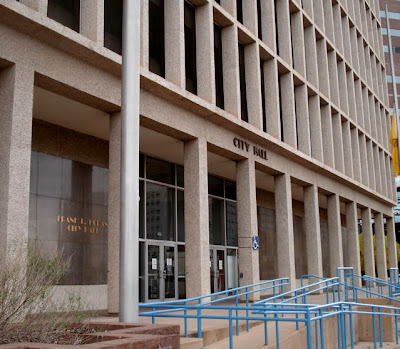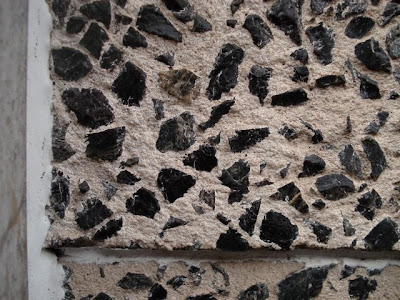
Built in 1884, it has a 1930 addition, as well as a renovation from 1951. The all southwestern stone is mixed throughout to give a bit of a look of tartan. Austin suspects that the darkest sandstone comes from quarries near Las Vegas, New Mexico, not Nevada, and dates back to the late Pennsylvanian-early Permian. Much younger and much lighter is the late Cretaceous Mesaverde Formation. It is also much weaker and spalls abundantly along the base of the cathedral. Back at the entrance to the Cathedral House, you can find a third stone, the Coconino Sandstone, one of the legendary layers within the Grand Canyon. It is 275 million years and formed in a vast dune field.

Moving a bit away from my goal of looking beyond the stone, I want to point out the nifty butterfly or bookmatched pattern of an easily overlooked box around the block from the Cathedral. Austin doesn’t note the origin of the stone but does stop to point it out, I think mostly because it is a way to use geology that should be noticed more often.

Finally a quick turn to what started life as the First National Bank building. Built in 1922, it is the Duke City’s first skyscraper and first building with a steel infrastructure. Austin called it the First Security Bank, and now it is designated the Sunrise Bank building (one wonders how soon till another bank nabs the building). It looks like hundreds of buildings with lower floors set off from the upper levels by a color or material change. There is little stone used. A whitish granite from the Raymond quarries in the Sierra Nevada is the most noticeable.
Thus ends my short tour of Albuquerque and its building stone. I highly recommend that if you do go there to try and pick up a copy of George Austin’s guide. It is one of the best and most thorough written not only about specific building stone but also about the industry, quarrying, and fabrication.



